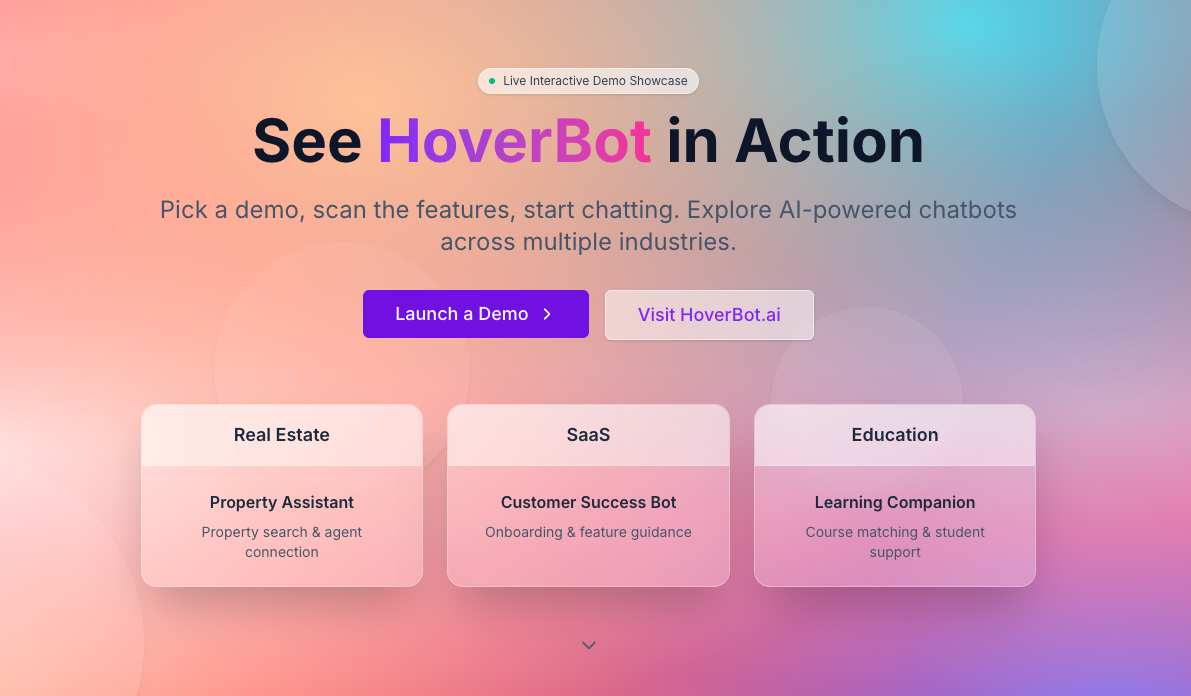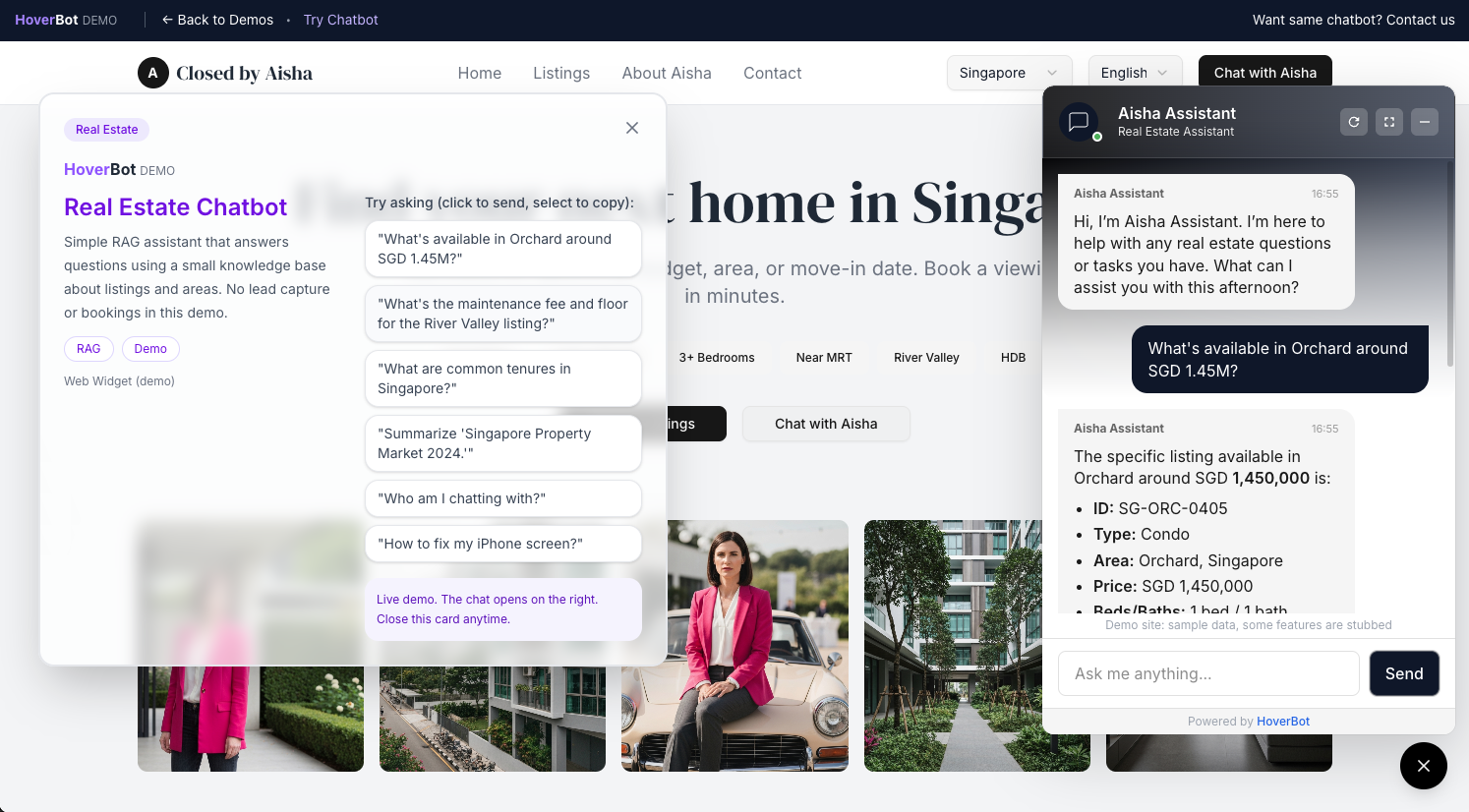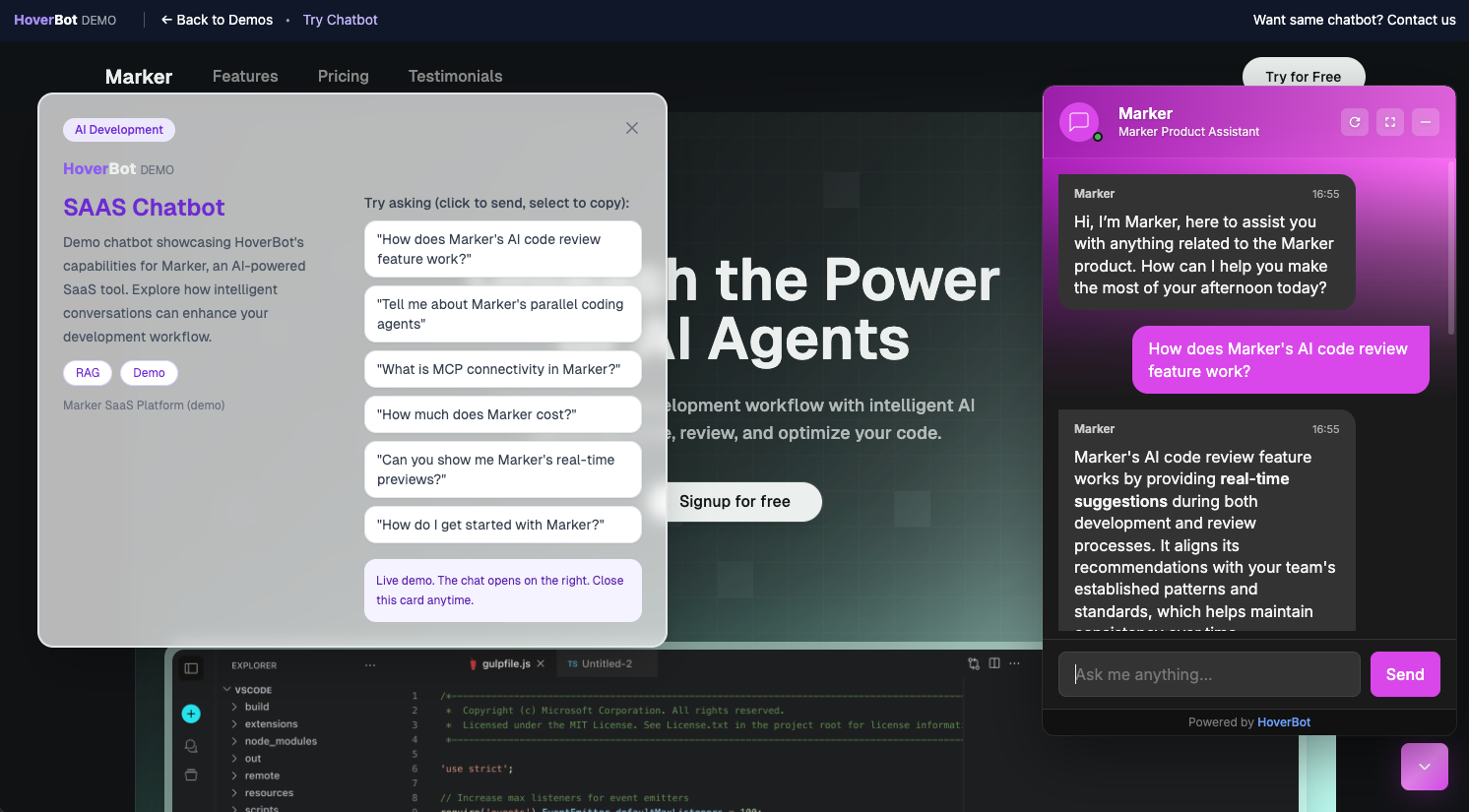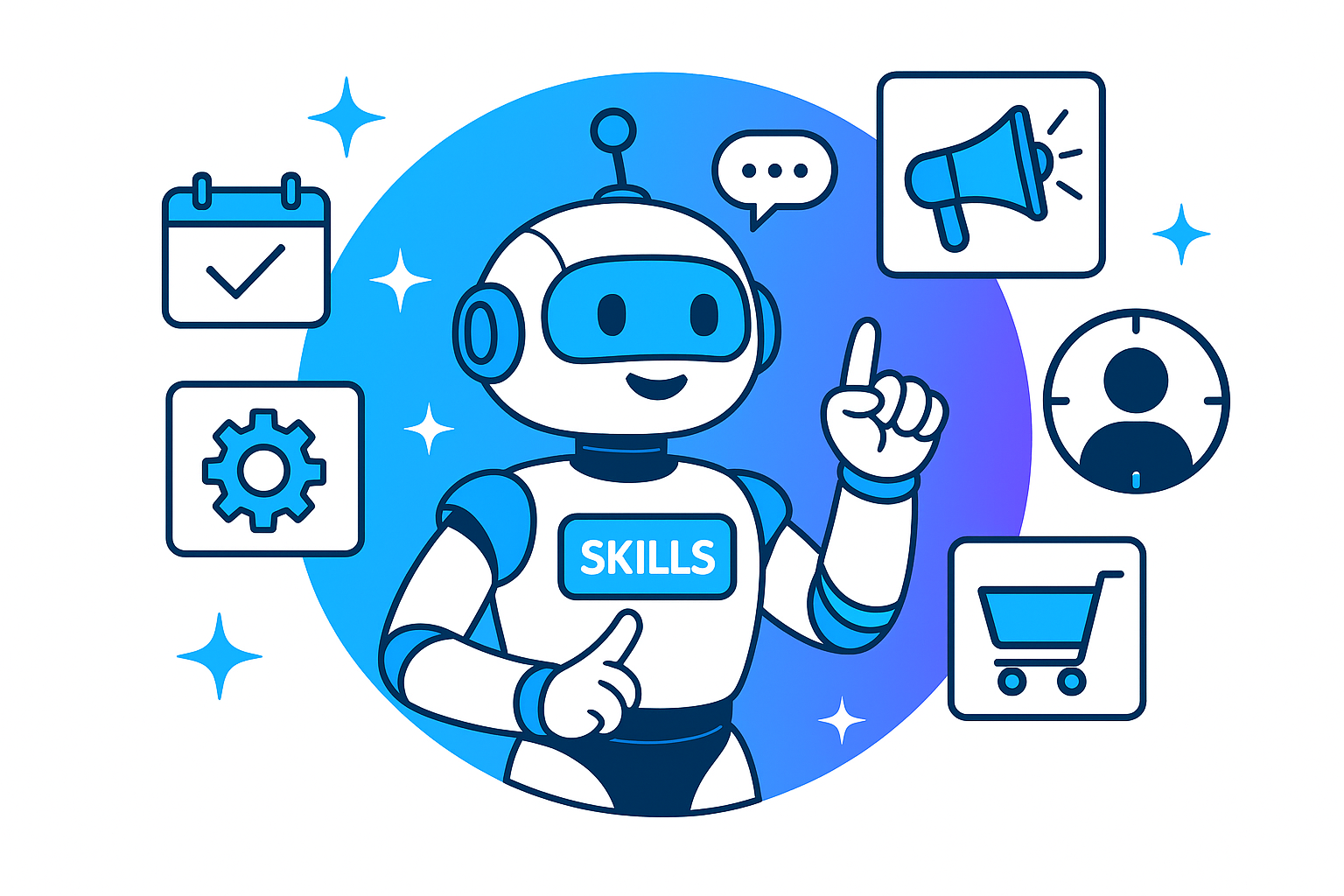HoverBot launches public demo portal with industry showcases

What's new
- Central demo hub. The new portal collects live, hosted demos so visitors can try HoverBot without setup.
- Industry examples. Two verticals are available at launch: residential property and developer-focused SaaS. More sectors will be added.
- In-product guide. Each demo opens with an overlay that explains scope and shows sample questions. Visitors can click a prompt to send it, or type their own.
How the demos work
Both demos run the same HoverBot web widget embedded in a full webpage. A short overlay clarifies the bot's role and any limits in the sample experience, then offers "suggested prompts" to try. Answers appear in the right-hand chat, with clear, structured responses and a running transcript.
Behind the scenes, the demos use a compact retrieval-augmented knowledge base so the assistant can cite specific facts relevant to the page context. They are designed to show the conversational flow, response formatting, and the lightweight UX elements—prompt chips, typing indicators, and message actions—without requiring any configuration.
Note: The demos use sample data and, in some cases, stub selected features to keep the experience fast and predictable.
Property demo (demo1.hoverbot.ai)

A guided assistant helps users ask about properties by budget, area or listing ID. Typical, click-to-send questions include:
- "What's available in Orchard around SGD 1.45M?"
- "What are common tenures in Singapore?"
- "Summarize this month's property market update."
The bot responds with listing-style details—such as ID, type, area, price, and bed/bath count—to illustrate concise, scannable answers. The page also includes quick-filter chips (e.g., bedrooms, near MRT) to mirror a real search journey.
Scope reminder in this demo: it's a simple RAG assistant over a small knowledge base; lead capture and bookings are disabled so visitors can focus on the conversation model and UX.
SaaS product demo (demo2.hoverbot.ai)

This demo frames the assistant as a product guide for a developer tool, showing how HoverBot can answer feature, pricing, and onboarding questions. Example prompts include:
- "How does the AI code review feature work?"
- "What is MCP connectivity?"
- "Can you show real-time previews?"
- "How do I get started?"
Responses emphasize feature explanations, setup steps, and team workflows, reflecting a common B2B SaaS support pattern where the bot shortens time-to-value and reduces repetitive pre-sales questions.
Why it matters
- Faster evaluation. Prospects can experience the chat flow and answer quality in minutes—no sandbox signup, no SDK.
- Vertical fit. Property and SaaS are common starting points for buyers; the demos illustrate how the same widget adapts to different information models and tones.
- Low-friction UX. On-screen overlays and prompt chips remove guesswork and encourage first-time users to try meaningful queries.
What you can test today
- Conversation UX: overlay, prompt chips, message formatting, and right-rail transcript
- Short-form, scannable answers for listings and product features
- How a small, curated knowledge base behaves in a live widget
What's next
HoverBot will expand the demo set with additional verticals and deeper flows (e.g., lead capture, help-desk handoffs, and authenticated actions) in production-grade examples. The company plans to keep at least one "pure conversation" demo to illustrate the baseline chat experience.
Try the demos
- Demo hub: https://demo.hoverbot.ai/
- Property assistant: https://demo1.hoverbot.ai/
- SaaS product assistant: https://demo2.hoverbot.ai/
For a tailored walkthrough or a proof-of-concept on your data, request a live demo.
Share this article
Related Articles

Close the loop: analytics that teach your chatbot to fix itself
Many chatbots stall for the same reason. Unanswered questions build up and nothing changes. Learn how to capture every miss as a signal, turn real gaps into small updates, and run a weekly improvement loop that delivers results without bigger models.

HoverBot Skills Framework – Making Chatbots Smarter for Specific Use Cases
Why one-size-fits-all chatbots fall short — and how modular skills add targeted, action-oriented capabilities like intent detection, promotional messaging, and CRM sync.